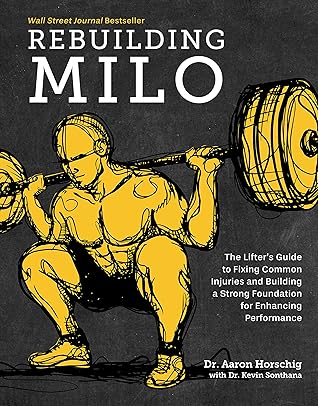Kindle Notes & Highlights
Read between
February 10 - March 4, 2023
To develop strength, you must strike a balance between stress and recovery.
To progressively develop more and more strength, the demands of your training must not exceed the adaptive capabilities of your body.
When you train hard and don’t give your body enough time to recover, the stresses of training begin to accumulate. And when you mix in less-than-perfect lifting technique, they add up even faster.
“The purpose of life is to discover your gift. The work of life is to develop it. The meaning in life is to give your gift away.”
Many medical doctors seek out “abnormal” findings (like a bulging disc) on an MRI scan, interpret them to be recent developments, and presume these specific tissues to be the source of pain. Basically, if something looks off on the scan, it is assumed to be the exact cause of the newly developed pain.
When a radiologist sees a bulging disc on an MRI scan, they have no way to determine whether it is due to a recent event (a wound) or is 20 years old (a scar).
It is a common misconception that lifters should shrug their shoulder blades when the barbell is overhead.
Strength is the ability to produce force, whereas stability is the ability to limit excessive or unwanted motion.
Stability also requires muscular endurance. This is why many corrective exercises to enhance stability are initially performed with high-repetition sets.
The row is an excellent exercise for addressing weakness in the posterior shoulder complex.
You can perform all the strength and mobility tests you want and spend thousands on an MRI or a CT scan, but if you don’t watch how someone moves, you’ll never be able to create a complete analysis.
One of my favorite exercises that encompasses mobility, stability, and movement coordination at the shoulder complex is the paused scap pull-up.
a certain set point of strength called the load tolerance level. Training loads placed on the tendons that do not severely exceed this set point create a cellular response in the tendons (that can actually be seen by ultrasound) that will return to normal in two to three days given proper recovery methods; this is the normal time frame for the adaptation “replenishment” process to take place.
Reactive tendinopathy can also occur upon returning to relatively “normal” training after an extended break, such as a weeklong vacation or a period of recovery from an unrelated injury.
Overload can even occur due to something as simple as a change in footwear—a shoe that provides less support, has stiffer soles, or has a lower heel than your previous pair.
You had a small flare-up last year and another a few months ago. You took a few weeks off, and the pain eventually went away, but it keeps coming back. Due to the chronic nature of these symptoms, you are likely experiencing a case of “reactive on disrepair/degeneration” tendinopathy.
the first step in decreasing symptoms is to take a step back from what caused the pain in the first place.
You never want to rest a tendon completely!
Other than temporarily numbing pain, ice delays healing and recovery.
Ask a bunch of medical professionals what the three phases of healing are, and they’ll all tell you the same thing: inflammation, repair, and remodel.
moving around frequently keeps lymph fluid from accumulating around an injured area.
Exercises performed in a relatively pain-free manner not only accelerate the removal of swelling through muscle contraction but also optimize the healing process without causing further damage.


